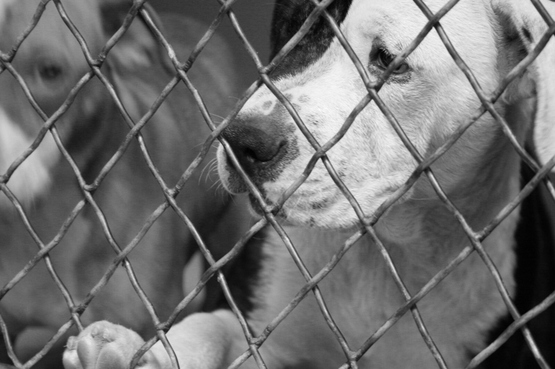|
I once had a shelter director tell me that to a dog, an animal shelter is like a prison. This was years ago. I've thought about her words many times over the years and as I have become more familiar with how most traditional shelters operate as compared to more progressive shelters. When I was contacted by a woman recently who tried to help a stray dog and whose story did not end well., I felt compelled to write something about the difference between a true shelter and an animal holding and disposal facility. In one city, a large dog with no name is seen running across a major roadway and stops near a local business. We'll call him Max. A concerned citizen tries to help Max. She attempts to get him into her car so that she can take him to a local rescue group or get help. Max is fearful, won't get in her car and someone at the business calls animal control. Max is taken to the local “animal shelter” to be held for five days. The citizen calls about Max to inquire about him. She is told that she either has to find Max's owner or find a rescue group to take Max in order to save his life. She tries valiantly to find someone to help and can find no one. She cannot take Max herself because she already has a house full of dogs. As the days pass, Max becomes more stressed. He first tries to bite a kennel worker. A couple of days later he tries to bite a child who put her hand through the kennel fencing. A few days after that, Max lunges at a shelter worker and another dog who are passing by his kennel. And that was it for Max. He was destroyed. Max was not in a shelter. Max was in a holding facility. What no doubt began as confusion for him escalated to fear and anxiety, leading to the point where he was deemed too dangerous to live. In another city, a dog named Forest enters a shelter. He's a unaltered lab/pit bull type mix who charges at the kennel door and shows his teeth. Luckily for Forest, he is in a true shelter, as most of us would interpret that word. Rather than let Forest simply exist in the shelter or deteriorate with time, the staff there work with him. They make time for him. They talk to him, sit outside the kennel door to simply be near him and they work slowly but surely to form a bond. This story has a happy ending. It turns out Forest is a sweet and gentle dog who thinks kissing people is wonderful and who is a perfect candidate for adoption. In writing about Forest's care, the shelter director said this: “If your cat or dog was ever lost and brought to a shelter, became petrified due to a shelter's scary, new environment (like Forest), and was tossed into a caged kennel (like Forest), and was separated from his or her family making it hard to trust the strangers imprisoning him or her (like Forest was), wouldn't you want shelter staff and volunteers to explore every option possible before killing your dog? I like to think we all would want this for our own animals. For this reason, we explore every option available for every animal that comes to us. Forest and so many other animals are safe and alive today because we do what we need to do to get animals past the anxiety of being dropped off in a terrifying building like an animal shelter." It has been said that the manner in which dogs behave in shelters tell us “as much or more about the effect of the shelter as they do about the individual dogs. Shelters are noisy, alien environments, filled with strange smells, unfamiliar people, and dogs they may hear, but not see. In light of all these factors, we should not be surprised that some dogs. . .will behave differently when confined in a shelter, with its barrage of stressors that the dog cannot control, than they will in the safe, secure, predictable environment of a home, cared for by people with whom they are able to form positive attachment.” (National Canine Research Council.) Every dog entering a place we call a shelter should be given the same opportunity for redemption as was Forest. Places which fail to take even a small amount of time to help set dogs up for success should not be called shelters at all. Let's call them holding and disposal facilities so the public they serve is under no illusions about what happens there. I know that some dogs are just broken. They are genuinely dangerous to people and should not be allowed to be adopted out into our communities. But I also know that any dog I have ever loved would be terrified, scared, traumatized and anxious in a traditional shelter environment and would have been destroyed. And for me, that is the biggest tragedy of all. (image courtesy of Terrah Johnson)
0 Comments
Your comment will be posted after it is approved.
Leave a Reply. |
AuthorI am an animal welfare advocate. My goal is to help people understand some basic issues related to companion animals in America. Awareness leads to education leads to action leads to change. Archives
July 2024
Categories
All
image courtesy of Terrah Johnson
|

 RSS Feed
RSS Feed